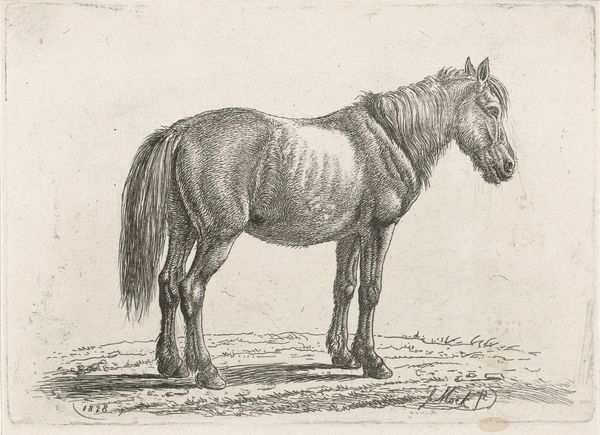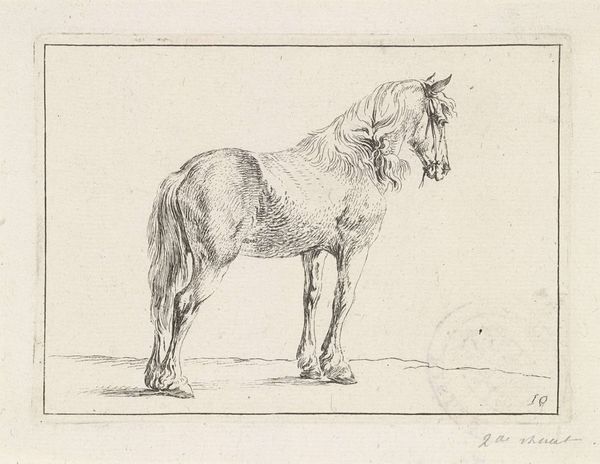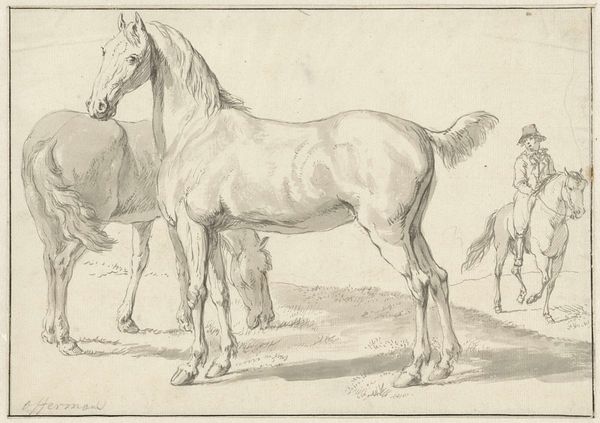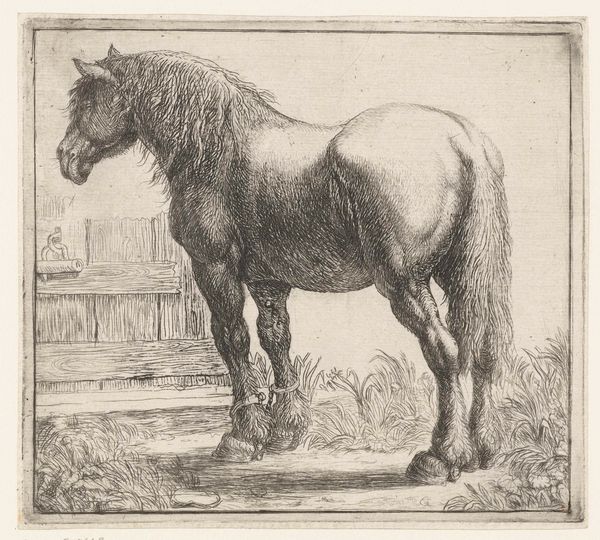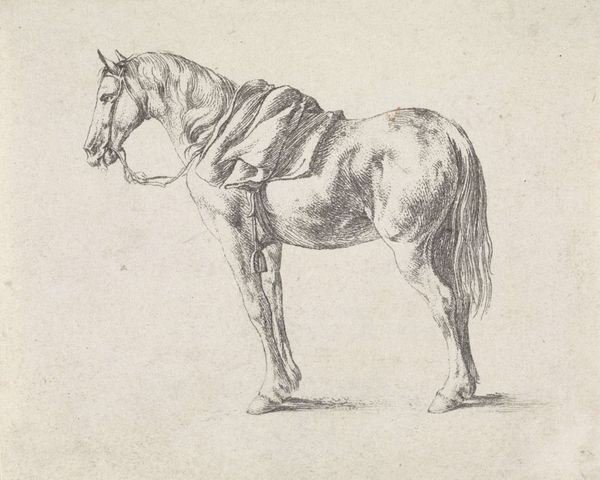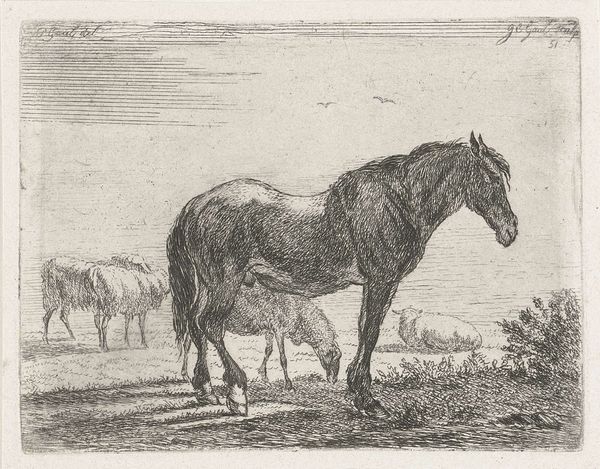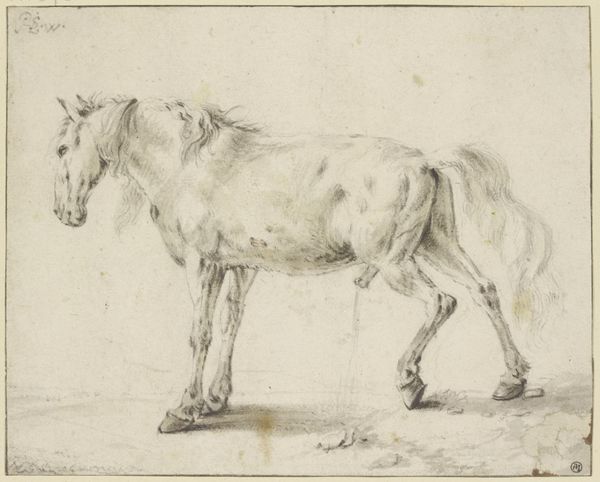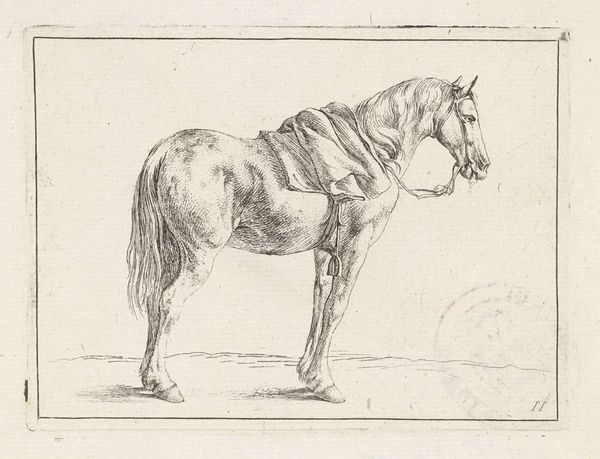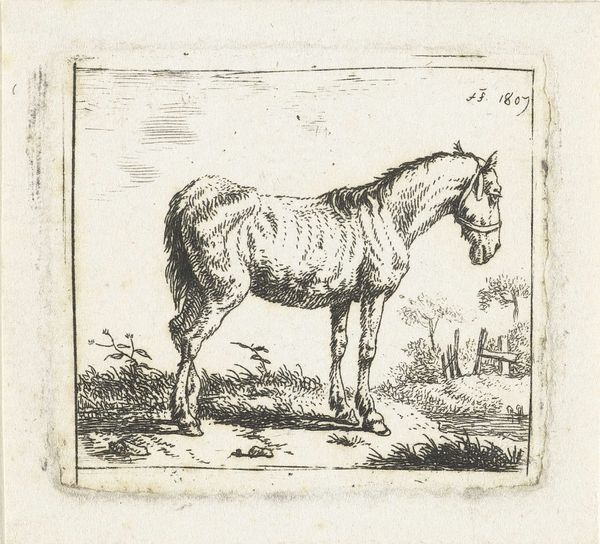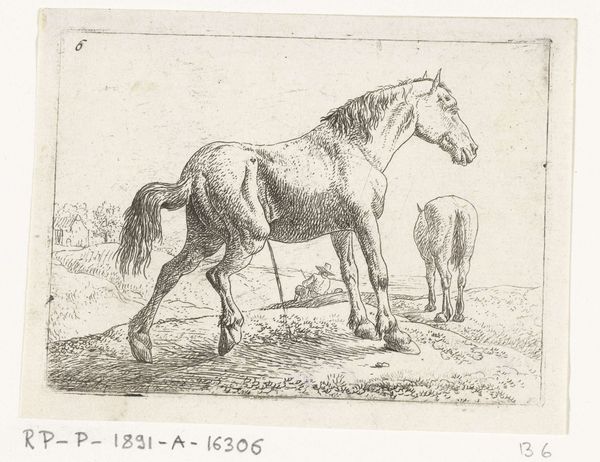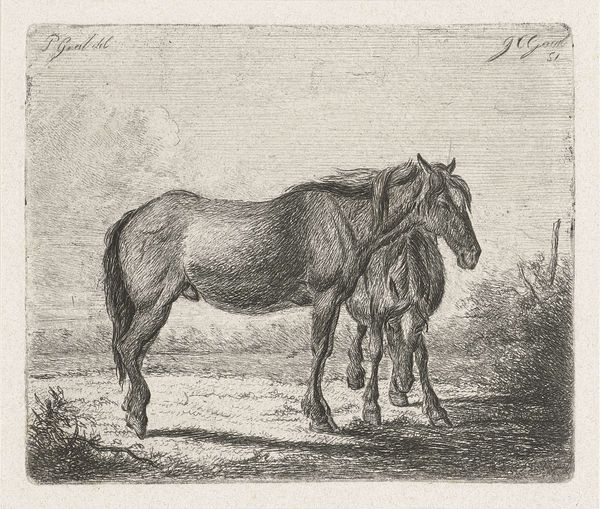
drawing, print, paper, ink, pencil, engraving
#
portrait
#
pencil drawn
#
drawing
# print
#
pencil sketch
#
landscape
#
figuration
#
paper
#
ink
#
pencil drawing
#
romanticism
#
pencil
#
horse
#
engraving
#
realism
Dimensions: height 108 mm, width 150 mm
Copyright: Rijks Museum: Open Domain
Editor: So, here we have "Standing Horse to the Right" by Johannes Mock, created in 1828. It's a detailed drawing, almost a print, really. I find it very simple and peaceful. What strikes you about this work? Curator: The image of the horse carries immense symbolic weight. Consider its historical significance – representing power, nobility, and freedom. Here, in this drawing, does the horse appear powerful to you, or something else? Editor: Hmm, it does appear serene, more domesticated somehow. Less a symbol of untamed wilderness. Curator: Precisely! The horse in art can also represent more internalized drives: passion, instinct, the unconscious. Note how Mock rendered the musculature – there’s strength implied, but a certain gentleness as well. Consider the Romanticism movement that it is tied to...do you find symbolism there? Editor: That's interesting. I was drawn to the realism of the rendering itself, but within Romanticism there’s an emphasis on emotion, right? Maybe the horse’s quiet posture invites introspection? Curator: Exactly. This detailed depiction connects to a broader theme in art and literature – the contemplation of nature, and of humanity's place within it. And perhaps also our own internal 'animal' nature that requires mastering. The cultural memory tied to the horse echoes across centuries. How does that resonate with you, seeing this image today? Editor: I guess, in our modern context, it’s a reminder of a connection to nature we’ve largely lost. Curator: Indeed. Perhaps Mock captured a longing we still share. It also reminds me that we are animals also, but civilized. Editor: I hadn't thought about it that way, this makes the piece richer for me.
Comments
No comments
Be the first to comment and join the conversation on the ultimate creative platform.
